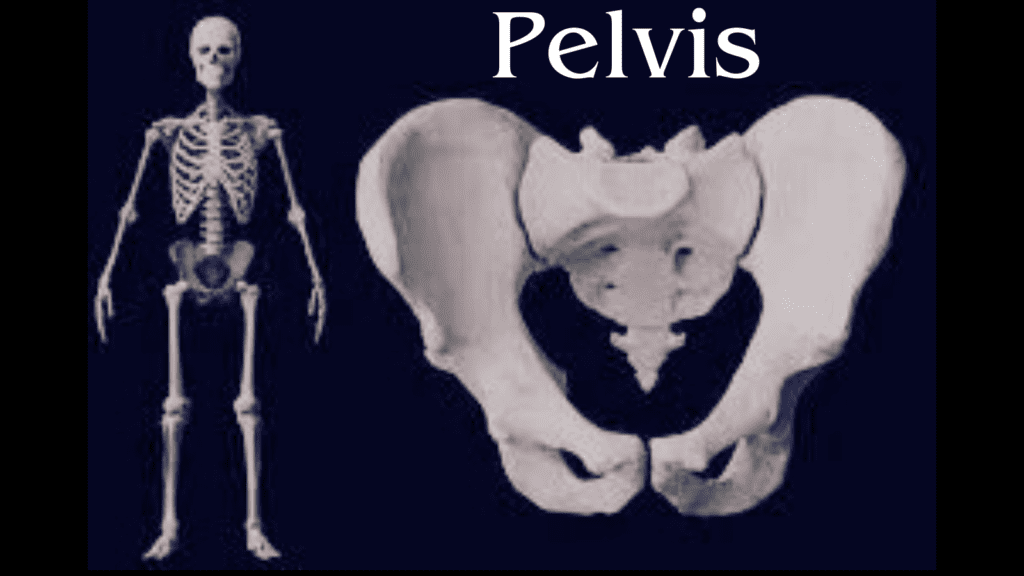Understanding the Pelvis: Structure, Function, and Importance

The pelvis, often referred to as the “keystone of the human body,” is a remarkable and complex structure that plays a crucial role in our everyday lives. Despite its importance, many people remain unaware of the intricate details of the pelvis, its functions, and how it impacts our overall well-being. In this blog post, we will delve into the world of the pelvis, exploring its structure, functions, and the significance it holds for our health.
The Anatomy of the Pelvis
The pelvis is a basin-like structure located at the base of the spine and connects the trunk to the lower limbs. It consists of several key components:
- Ilium: The large, wing-shaped bones that form the upper part of the pelvis, also known as the iliac bones.
- Ischium: These are the lower, posterior parts of the pelvis, forming the “sit bones” that support our body weight when sitting.
- Pubis: The front part of the pelvis, which connects the left and right sides.
- Sacrum: A triangular bone at the base of the spine that forms the back of the pelvis and connects to the vertebral column.
- Coccyx: The tailbone, which is a small, triangular bone at the very base of the spine.
Functions of the Pelvis
The pelvis serves a multitude of essential functions in the human body:
- Support and Protection: The pelvis supports the weight of the upper body when we stand or sit and protects vital organs such as the reproductive organs, urinary bladder, and parts of the digestive system.
- Movement: It plays a pivotal role in our ability to walk, run, and perform various physical activities by connecting the spine to the lower limbs through the hip joints.
- Childbirth: In women, the pelvis is designed to accommodate childbirth. The pelvic inlet and outlet dimensions allow for the passage of a baby during delivery.
- Posture and Balance: A stable pelvis is crucial for maintaining good posture and balance. Muscles and ligaments surrounding the pelvis help support the spine and keep us upright.
- Attachment for Muscles: Numerous muscles, including those of the lower back, abdomen, and hip, attach to the pelvis. This provides stability and enables a wide range of movements.
Pelvis and Health
Understanding the pelvis is essential for maintaining overall health and well-being. Here are some key points to consider:
- Pelvic Health: Conditions such as pelvic floor disorders can impact both men and women. Proper pelvic health is essential for bladder and bowel control, sexual function, and overall comfort.
- Posture and Back Health: A well-aligned pelvis is crucial for maintaining good posture and preventing back pain or injury. Physical therapy and exercises targeting the pelvis can be beneficial.
- Exercise and Mobility: Athletes and fitness enthusiasts rely on the strength and flexibility of their pelvis for optimal performance. Stretching and strengthening exercises can help improve pelvic mobility and stability.
- Pregnancy and Childbirth: Women should be aware of the changes their pelvis undergoes during pregnancy and the importance of proper prenatal care to ensure a safe and healthy delivery.
Looking to the Future: Advancements in Pelvic Health
As we continue to explore the intricacies of the pelvis and its significance in our lives, it’s essential to also consider the future of pelvic health. Advances in medical research and technology are opening up exciting possibilities for improving pelvic health and treating related conditions.
- Telemedicine and Digital Health: Telemedicine and digital health platforms are making it easier for individuals to access pelvic health professionals remotely. This can be particularly beneficial for those who may be hesitant to seek in-person care or live in areas with limited access to specialized healthcare.
- Personalized Treatment Plans: The field of medicine is moving towards more personalized and tailored treatment plans. With advancements in genetics and diagnostic tools, healthcare providers can offer individualized approaches to pelvic health management, optimizing outcomes for each patient.
- Minimally Invasive Procedures: Minimally invasive surgical techniques are becoming increasingly common for pelvic surgeries, reducing recovery times and minimizing scarring. Conditions such as pelvic organ prolapse and endometriosis can now be treated with less invasive approaches.
- Advanced Imaging: High-resolution imaging technologies are improving our ability to diagnose and understand pelvic conditions. This allows for more accurate and timely assessments, leading to better treatment decisions.
- Pelvic Floor Rehabilitation: Pelvic floor rehabilitation is gaining popularity as a non-invasive approach to addressing a range of pelvic issues, including incontinence and pelvic pain. Physical therapists with specialized training can work with patients to strengthen and rehabilitate the pelvic floor muscles.
- Preventive Care: As our understanding of pelvic health grows, there is a greater emphasis on preventive care. Education and awareness campaigns are helping individuals recognize the importance of maintaining pelvic health and seeking regular check-ups.
- Research and Innovation: Ongoing research in fields such as biomechanics, urology, gynecology, and orthopedics is expanding our knowledge of the pelvis. This research may lead to breakthroughs in treatment options and rehabilitation techniques.
Conclusion
The pelvis is a remarkable and multifunctional structure that plays a pivotal role in our daily lives and overall well-being. Understanding its anatomy and functions is crucial for maintaining good posture, preventing injuries, and ensuring proper pelvic health. As we look to the future, advancements in pelvic health are offering exciting possibilities for improved care and treatment. Telemedicine, personalized treatment plans, minimally invasive procedures, advanced imaging, pelvic floor rehabilitation, preventive care, and ongoing research are all contributing to a brighter outlook for pelvic health. By staying informed and proactive about our pelvic health, we can lead healthier and more comfortable lives.
Disclaimer: This blog post is for informational purposes only and should not be considered a substitute for professional medical advice. Always consult with a healthcare provider for a proper diagnosis and personalized treatment plan.
Stay updated—subscribe now for informed empowerment!

